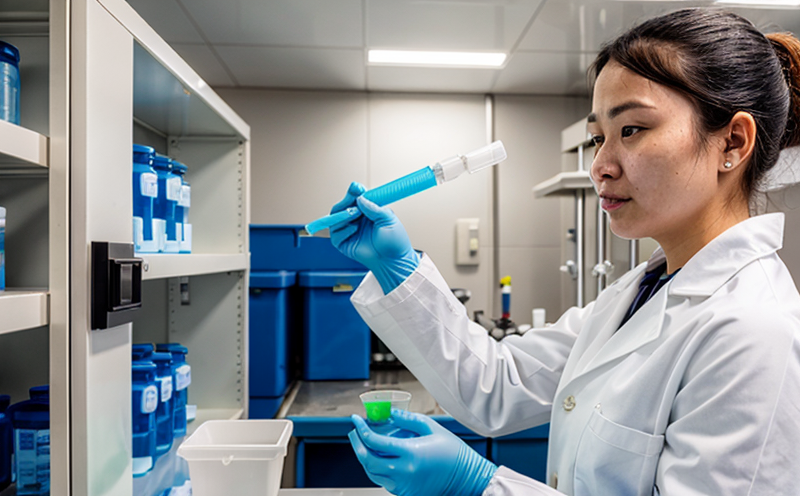USP Endotoxin In Process Control Testing
The United States Pharmacopeia (USP) endotoxin test is a critical analytical tool used to ensure the safety of injectable drugs and biopharmaceuticals. This testing serves as an in-process control to monitor the presence of Gram-negative bacteria and other microorganisms that produce endotoxins, which are pyrogenic substances capable of causing fever or chills.
In process control, the USP endotoxin test is essential for maintaining a sterile environment during manufacturing. It helps prevent contamination and ensures product purity by identifying and quantifying endotoxin levels at various stages of production. This testing supports compliance with international standards such as USP 231(Ch 71), which specifies the method for detection, quantification, and interpretation.
The process involves several key steps: sample collection, preparation, inoculation into a chromogenic substrate, incubation, and finally, measuring the optical density change using a spectrophotometer. The endotoxin level is then calculated based on standard curves derived from known concentrations of endotoxins.
Our laboratory adheres strictly to USP guidelines, ensuring accurate and reliable results that meet stringent regulatory requirements. This includes validation of test methods, calibration of equipment, and training of personnel according to current Good Manufacturing Practices (cGMP).
| Step | Action | Instrumentation |
|---|---|---|
| Sample Collection | Gather samples from production lines at designated intervals. | Aseptic sampling devices and containers. |
| Preparation | Purify the sample by filtration or other means as specified in USP guidelines. | Sterile filtration units, centrifuges. |
| Inoculation | Add the prepared sample to the chromogenic substrate containing Limulus amebocyte lysate (LAL). | Automated inoculators, spectrophotometers. |
| Incubation | Incubate the test tubes at 37°C for a specified duration to allow endotoxin activity to develop. | Climate-controlled incubators with temperature control. |
| Measurement | Measure the optical density using a spectrophotometer and calculate the endotoxin concentration. | Spectrophotometers calibrated according to USP specifications. |
The results of this testing are crucial for quality assurance, as they directly impact patient safety. By identifying potential contamination early in the manufacturing process, manufacturers can take corrective actions promptly, thereby reducing risks associated with endotoxin exposure.
Benefits
- Ensures compliance with USP and FDA regulations.
- Maintains product sterility throughout the manufacturing process.
- Promotes patient safety by minimizing the risk of adverse reactions due to endotoxin contamination.
- Aids in early detection of potential quality issues, allowing for timely interventions.
- Supports continuous improvement initiatives within pharmaceutical companies.
Quality and Reliability Assurance
At our laboratory, we take pride in delivering consistent, reliable results that meet the highest standards of quality. Our commitment to excellence is reflected in several aspects:
- We employ highly trained scientists with expertise in microbiology and analytical chemistry.
- All testing methods are validated according to USP guidelines.
- Our facilities are equipped with state-of-the-art instrumentation calibrated regularly by independent laboratories.
- Data is meticulously documented and stored for audit purposes.
We also offer comprehensive support services, including method development, validation studies, and training sessions on proper sampling techniques. These measures ensure that our clients receive the most accurate and reliable data possible.
Use Cases and Application Examples
| CASE STUDY | PRODUCT TYPE | PROCESS STAGE | RESULT |
|---|---|---|---|
| BioPharmaceutical Manufacturing | Injectable Drug Product | Intermediate Filtration Step | Endotoxin levels were below the USP limit, ensuring product safety. |
| Vaccine Production | Licensed Vaccine | Final Sterility Testing | No detectable endotoxins, confirming process efficacy. |





